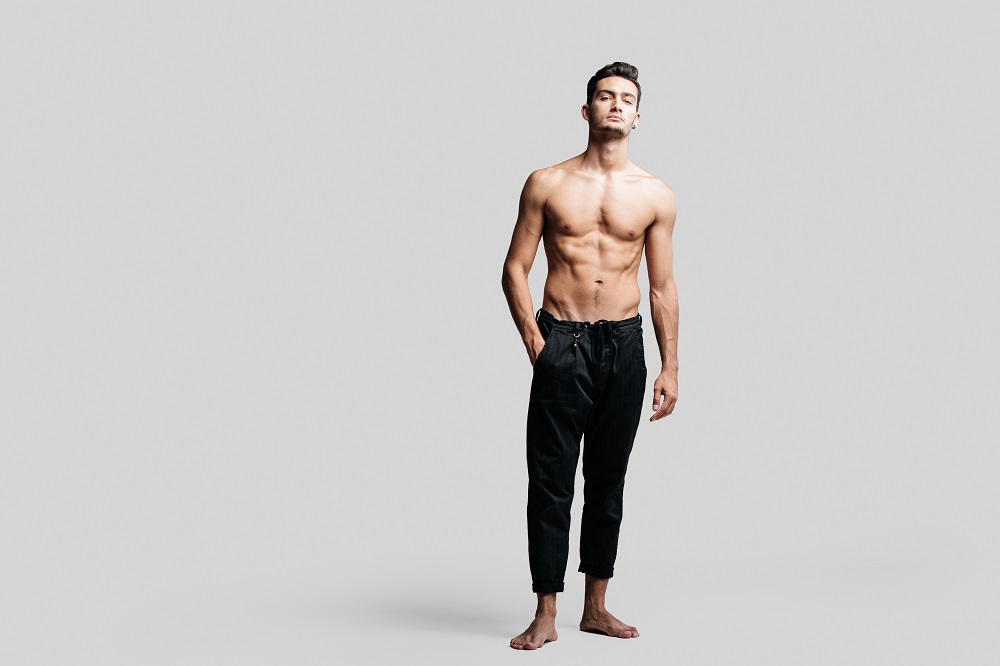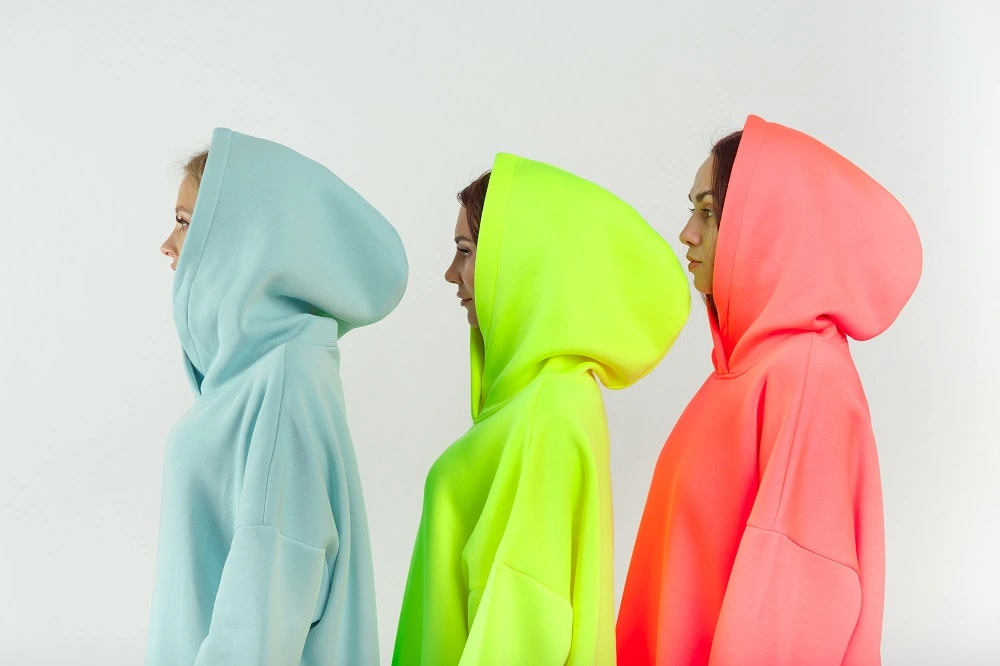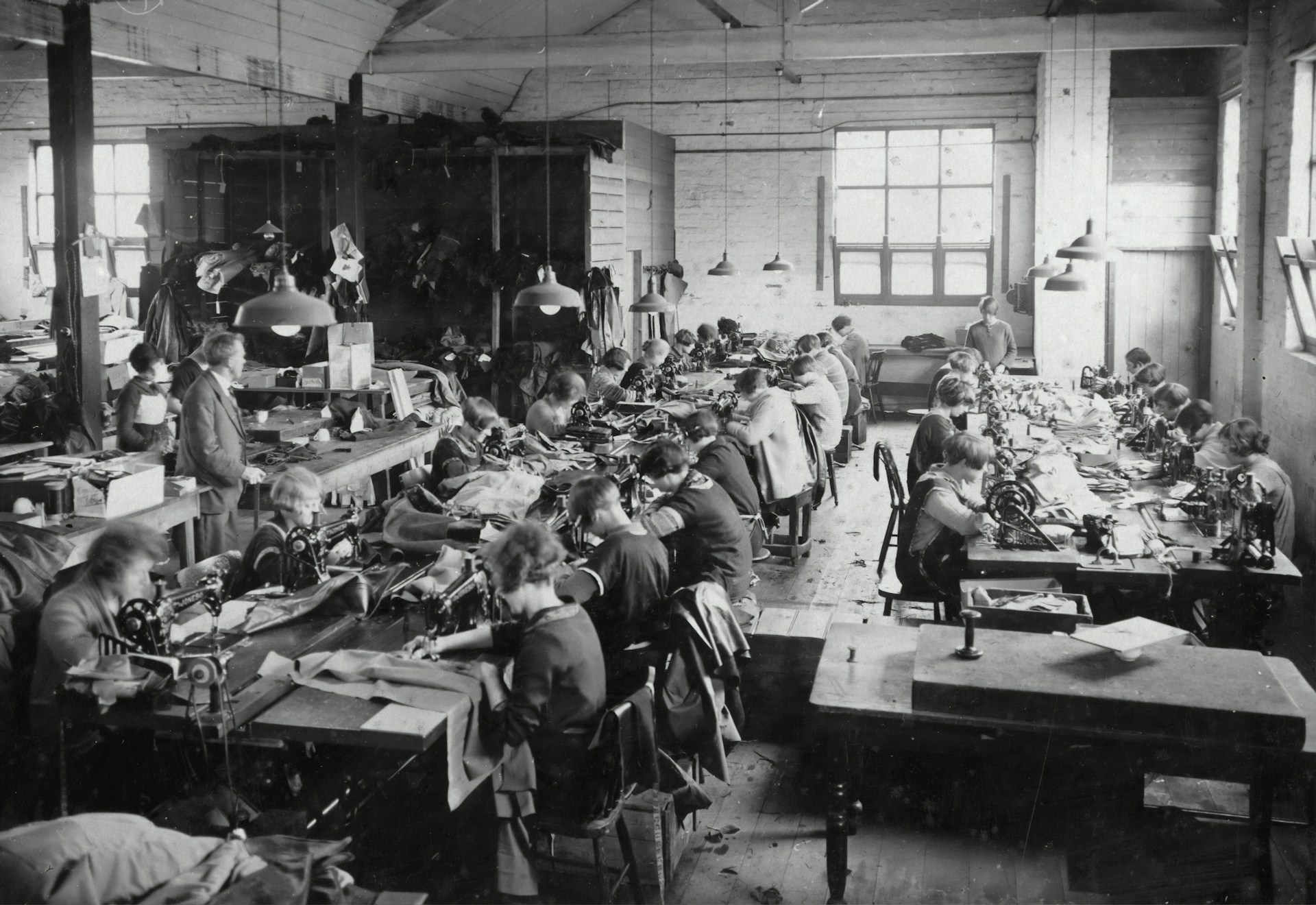Golf is a popular sport that is enjoyed by people of all ages and backgrounds. One important piece of golf equipment is the golf shirt. The golf shirt should be comfortable, breathable, and stylish. But with so many different types of golf shirt materials on the market, it can be difficult to know which one is the right choice. This blog will discuss the different types of golf shirt materials and their pros and cons. We will also provide some tips on choosing the right golf shirt material. Let’s get started!
Elements of a Golf Shirt
A golf shirt has ten different components: the collar, neck tape, yoke, inner placket, collar point, outside placket, sleeve panel, cuff, body panel, and bottom hem. Most people are familiar with the shirt’s collar, a folded cloth that highlights the neckline.
Some collars are pointed at the tips, while others are more rounded, and they can be buttoned down for increased security or left open. The collar is essential to a golf polo shirt because most courses require players to wear a collared-sleeve golf polo.
Another essential component of golf apparel is the yoke, which extends across the shoulders and down the back of the shirt, influencing how the shirt fits along the back. The placket is a vertical piece of fabric on which buttonholes are sewn.
The placket includes folds of fabric on either side that offer further intricacy to a shirt. Most men’s golf polos feature short sleeves, which can be loose or tight depending on the shirt’s fit. Some may also wear long sleeves. The dressier the t-shirt, the tighter the sleeves are likely to be, as a fitting shirt has a cleaner appearance.
Types of Fit in Golf Shirts

While it would be ideal if choosing a playoff polo was as easy as pulling any shirt with a design you like off the rack, golf shirts come in a variety of fits that must be considered when selecting a shirt. Common playful designs include color blocks, chest stripes, jacquard, striped golf polo, and camo golf polo. Your body type often influences the fit you choose.
Ectomorphs, or naturally skinny people, have a lean and narrow body type with thin shoulders and chests. Men with an ectomorph body type might like a slim fit or fitted shirt, as these styles lessen the baggy appearance that a relaxed or standard fit shirt provides.
Mesomorphs are people who naturally gain muscle mass and have an athletic or muscular physique. Men with the mesomorph body type have broad shoulders and a thin waist, therefore fitting along the shirt’s yoke is vital to them. Mesomorphs can wear a standard fit, slim fit, or fitted shirt, and they are likely to be comfortable in any of these styles.
Furthermore, endomorphs are people with rounded bodies who tend to gain weight in the abdomen. Endomorphs are often stocky and lack waist definition compared to their mesomorph and endomorph counterparts. A slim fit or fitting shirt will not flatter endomorphs, who are more likely to be comfy in a regular fit shirt.
Regular Fit
Standard fit or traditional fit shirts can also be known as regular fit shirts. These cozy shirts offer a loose fit and enable golfers to execute a seamless swing with a full range of motion. Classic-fit pullover golf shirts usually have sleeves that are a bit longer and wider compared to a slim fit or fitted shirt, while the body will be looser and longer with a slightly wider fit to accommodate extra weight in the abdomen. The waist of a standard-fit shirt does not narrow and runs straight down from below the armpits.
Slim Fit
Although they are less fitted than fitted shirts, slim-fit shirts appear more fitted than regular-fit shirts. There is less material beneath the arms in slim-fit shirts because the arm openings are smaller and higher than in regular-fit shirts, and the sleeves are often more fitting and shorter.
The shirt’s body lies closer to the body generally, with the waist tapering somewhat from underneath the arms. In general, a slim-fit shirt has a shorter length and a narrower waist.
Fitted
The most form-fitting kind of golf apparel you can buy is a fitted shirt. Men who are very secure in their bodies and desire a shirt that shows off their hard work should wear fitted shirts. A fitted shirt fits tight to the body and has a more tailored appearance with minimal extra clothing.
Shorter sleeves are worn near the arm, making constant contact. The shirt has a closely fitted waist that gradually tapers down the length of the body. Fitted shirts have a narrower waist and are shorter than slim-fit shirts.
Why Fabric Matters?
A retail brand’s golf gear line’s success is largely dependent on the fabric selection. Choosing the appropriate golf polo material can have a direct impact on consumer happiness, brand loyalty, and overall sales, especially with the growing demand for fashionable and high-performance golf shirts.
Retailers must recognize the importance of fabric quality to distinguish their brand in a crowded market and to exceed customer expectations. Additionally, shops can gain a competitive edge by keeping up with the latest trends in golf apparel.
Consumer Expectations
Comfort, functionality, and longevity are the top priorities for customers when they purchase golf shirts. Golfers must wear their shirts for extended periods, therefore comfort is crucial. A comfortable shirt can greatly improve the player’s experience. Equally crucial are qualities that wick away moisture, which keep the player cool and comfortable—particularly in warm, muggy weather.
Another important consideration is durability; customers want textiles that will hold up to many washings and heavy use without losing their color, form, or functionalities. To satisfy customers and promote repeat business, retailers must provide materials that live up to these expectations.
Brand Differentiation
Offering quality fabrics helps set a company apart from its competitors in a crowded retail market. Superior materials not only increase the product’s perceived worth but also strengthen the brand’s reputation for excellence in delivery. Retailers may establish their brand as a high-end option in the market by selecting textiles that provide exceptional comfort, performance, and durability.
This distinction may draw wealthy customers who are prepared to spend more for superior products, resulting in a rise in word-of-mouth recommendations and customer loyalty. Retailers who place a high value on fabric quality have a greater chance of creating a distinctive, powerful brand that sticks out in the golf apparel market.
Trends in Golf Apparel
Retailers hoping to gain market share need to stay on top of golf apparel trends. As more people become environmentally conscious, one trend that is currently observed is the rising demand for eco-friendly fabrics.
Materials with a low environmental impact and sustainability, like recycled polyester and organic cotton, are becoming more and more popular. Another trend is the growth of high-performance textiles that offer advanced properties like UV protection, odor resistance, and improved flexibility for better mobility.
By incorporating these modern fabrics into their product lines, retailers may appeal to modern consumers who demand both innovation and responsibility in their wardrobe selections.
The Best Golf Shirt Fabrics

For men’s golf shirts, selecting the proper fabric is important for both shops and their clients. The material is an important consideration when choosing a purchase because it influences comfort, performance, and durability.
The best materials for golf shirts are covered in this guide; each has certain advantages that might appeal to various market niches. Knowing these materials will help you stock the best options for your consumers, from eco-friendly, sustainable fabrics to high-performance polyester.
Polyester
Men’s golf shirts are typically made of polyester, which is preferred for its strength, capacity to wick away sweat and feel of lightness. This synthetic fabric for golf wear is long-lasting and resilient, making it a great choice for people who are constantly washing and using their clothes. Golfers stay dry and comfortable even during strenuous rounds because of its capacity to drain sweat away from the body.
Furthermore, polyester is one of the lightweight golf shirt materials that facilitates easy movement, a crucial aspect of athletic wear. Polyester is inexpensive and simple to maintain from a commercial standpoint, which minimizes the need for frequent restocking and guarantees consumer happiness. This material is perfect for businesses that target functional clients that are active and performance-driven, as a result of its performance-oriented qualities.
Cotton
Men’s cotton golf shirts are still a classic because of their softness, breathability, and organic feel. On hot days on the course, this fabric’s superior air circulation keeps wearers cool. Its velvety feel is kind to the skin and offers unparalleled comfort that is appealing to a broad range of people.
The organic quality of cotton also appeals to traditional clients who like a cozier, more laid-back look. Cotton golf shirts are a great choice for companies that value comfort and classic style, so merchants can use them to create collections for casual wear or to draw in customers who value comfort.
Blends (Poly-Cotton, Tri-Blends)
The best of both worlds is provided by blended textiles, such as poly-cotton and tri-blends, which combine the advantages of several materials. For instance, blends of polyester and cotton are breathable fabrics for golf shirts that offer the breathability and durability of cotton with the softness and durability of polyester.
Tri-blends go one step further by using a different fiber, such as rayon, to improve comfort and flexibility. These adaptable choices are popular with a wide range of consumers, which makes them a wise selection for merchants trying to expand the range of products they sell.
Blends offer a well-rounded solution that accommodates a range of customer preferences, regardless of whether your target market is performance- or comfort-driven.
Performance Fabrics (Nylon, Spandex, etc.)
Performance golf shirt fabrics, which include spandex and nylon, are designed with cutting-edge technology, elasticity, and quick-drying qualities in mind. For golfers who need unrestricted motion during their game, these materials are perfect since they give exceptional elasticity and movement.
Furthermore, their quick-drying qualities guarantee that users stay comfortable in inclement weather. Performance fabrics are a wonderful fit for retailers who serve high-end, performance-focused brands because they draw premium markets and athletic-focused consumers who value both style and practicality.
Eco-Friendly Fabrics
Eco-friendly materials like organic cotton and recycled polyester are becoming more popular in the golf gear industry as a result of rising consumer interest in sustainability. Because of their focus on minimizing environmental impact during design, these materials are attractive to consumers who care about the environment.
By adding sustainable materials to your product range, you not only satisfy a growing consumer base but also improve the perception of your company as an ethical and progressive merchant. Eco-friendly materials and organic cotton golf shirts are a wise investment for firms that prioritize sustainability and ethical sourcing since they appeal to today’s ecologically conscious consumers.
Factors to Consider When Choosing Golf Shirt Materials for Retail
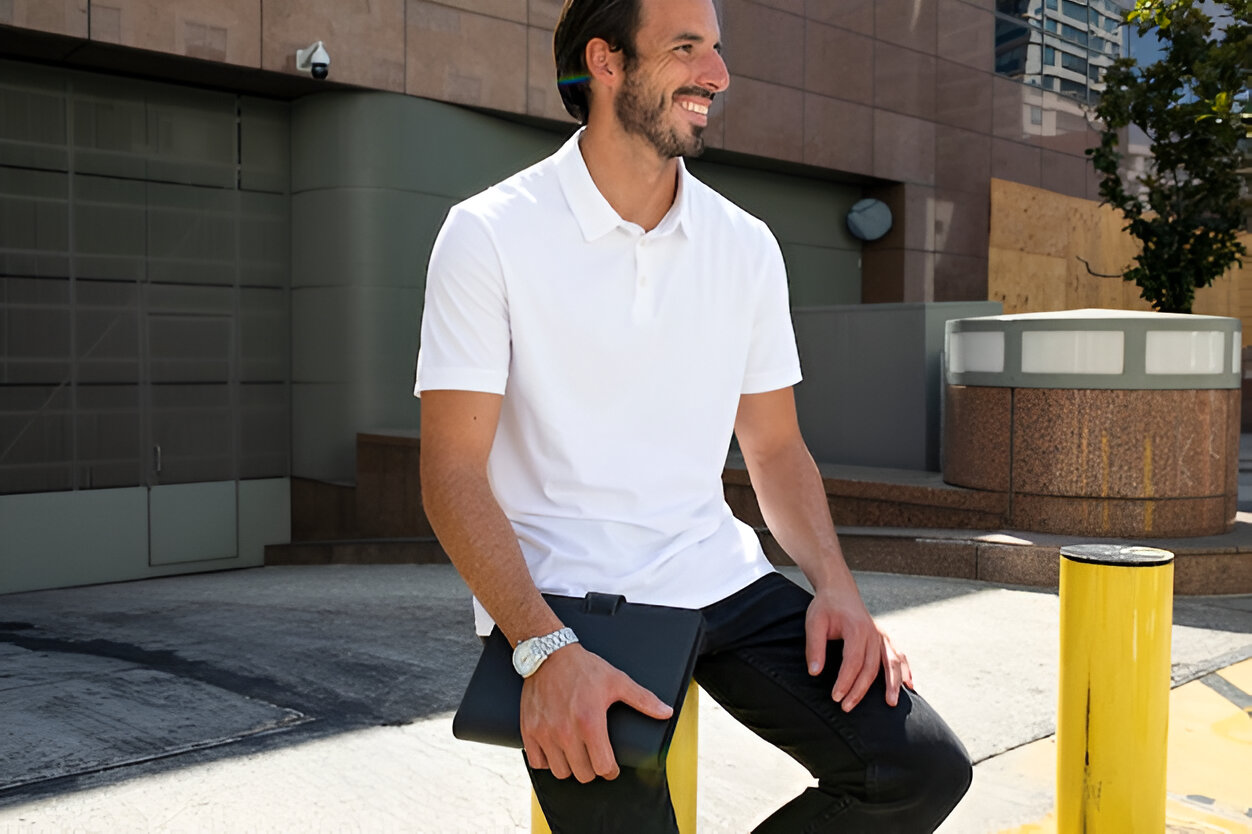
Retail companies have to strike a balance between market appeal, usability, and quality when choosing fabrics for men’s golf shirts. The fabric selection has a big impact on brand loyalty and is essential to client happiness.
Retailers must take into account several factors when selecting the appropriate material, including supply chain logistics, target demographics, brand identity, and seasonal trends. It’s not enough to simply choose what looks beautiful. The following are important considerations to make while choosing which materials to stock.
Consumer Demographics
To satisfy the demands of your target market, you must customize your material selections to particular customer segments. Which fabrics will appeal to different customer groups depends on a variety of factors, including age, lifestyle, and preferences.
For instance, younger, more active males would favor materials with high performance and moisture-wicking properties, but older consumers might go toward comfortable golf shirt materials such as cotton because of their breathability and comfort. Knowing your audience’s tastes will help you choose items that will increase client satisfaction and encourage recurring business.
Brand Positioning
Your golf shirts’ material choice should complement the look and pricing range of your business. Premium companies may place more emphasis on high-end, high-performance textiles that can justify a premium price, such as spandex blends or eco-friendly alternatives.
Value-oriented businesses, on the other hand, might choose to use sturdy and reasonably priced materials like polyester. The message you wish to deliver to your audience should be reflected in the materials you choose, and they should also be consistent with your overall brand identity.
Supply Chain Considerations
Reliability in manufacturing is essential to ensuring a consistent supply of superior fabrics. Retailers need to know if their suppliers can meet the demand without sacrificing the quality of their products.
Lead times, production capacity, and the ability to obtain particular materials in bulk should also be taken into account. A robust supply chain keeps you ahead of stock outs and gives you a competitive advantage in the market by ensuring that you can continuously provide the quality your consumers want.
Seasonality
Different materials might be better suited for different seasons, which could affect the range of products you sell all year round. For example, moisture-wicking & lightweight fabrics, such as blends of polyester, work well for summer collections because they keep wearers cool in warm temperatures.
On the other hand, thicker or more insulating materials can be more appropriate for the fall and winter. All year long, you may maximize sales and better satisfy client expectations by matching your material selections to seasonal trends.
How to Source High-Quality Golf Shirt Fabrics
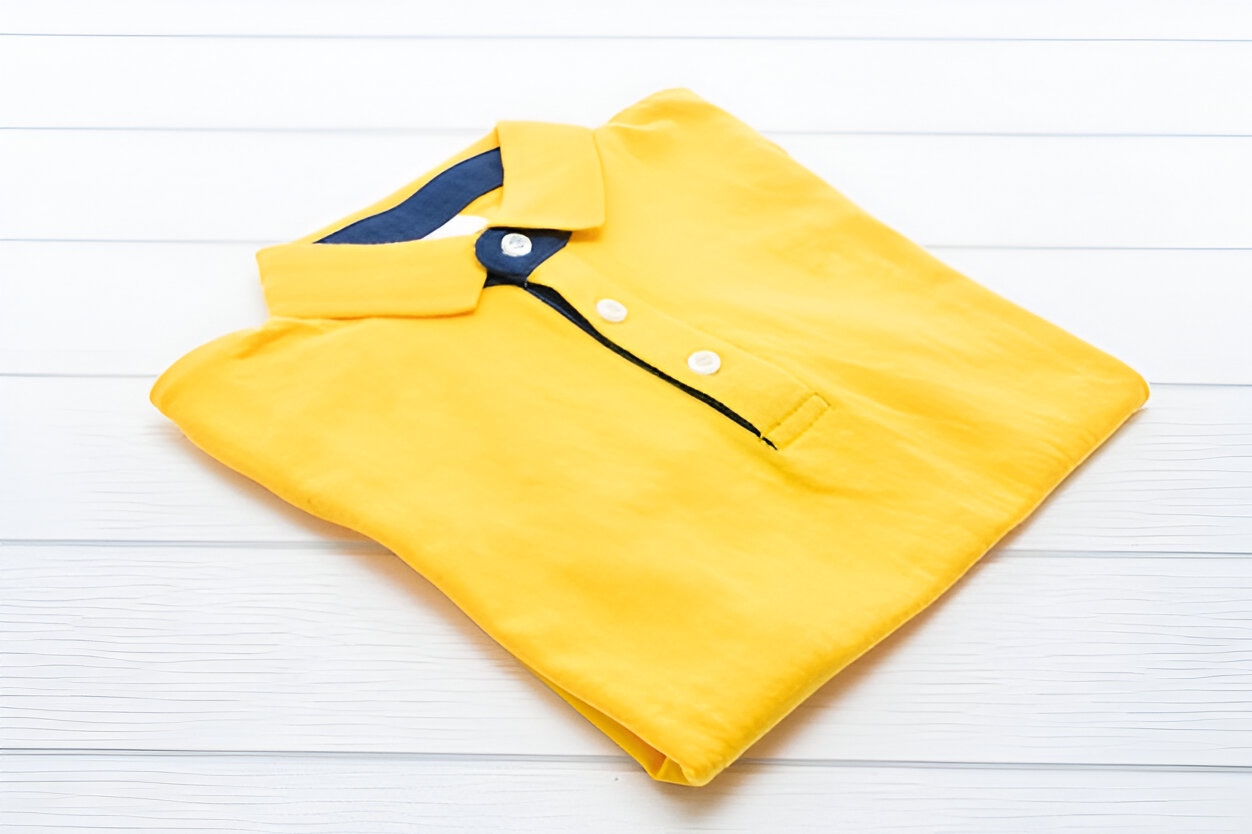
Purchasing premium golf shirt materials is crucial for retail companies who wish to provide their clients with high-end merchandise. This process entails more than simply picking the ideal fabric; it also entails identifying the ideal partners and coming to strategic decisions that support the objectives of your business. We go over important factors below to assist you choose wisely when choosing materials for your men’s golf shirts.
Choosing the Right Supplier
Assuring the constant quality of your golf shirts requires collaborating with reliable shirt manufacturers. In addition to offering premium products, a trustworthy supplier is aware of the particular requirements of your retail establishment.
They must be knowledgeable about the subtleties of golf apparel, such as seasonal trends and performance materials, and capable of providing solutions that satisfy your deadlines for manufacturing as well as your quality requirements. Working with a reliable supplier supports your brand’s reputation and customer happiness by lowering the chance of delays, defects, and supply chain interruptions.
Customization Options
In a crowded market, customization is essential to setting your business apart. Working with producers who provide custom mixes or finishes can enable you to develop distinctive golf shirt materials that complement your brand’s personality and appeal to your intended market.
Customizable golf clothing manufacturers can help realize your vision, whether you’re searching for a particular texture, color, or performance attribute like moisture-wicking or UV protection. Because of its adaptability, your company can differentiate itself by providing high-quality, unique products only found in your range.
Bulk Ordering & Cost Efficiency
An issue that many retail businesses encounter is balancing cost-effectiveness with quality. If you purchase in bulk from your manufacturer, you can cut expenses per unit considerably, but you must make sure that the quality of your supplies is not sacrificed in the process.
Seek out manufacturers who uphold high standards in the creation of cloth while providing competitive rates for bulk orders. Additionally, to properly manage inventory without going over budget, think about negotiating terms that allow variable order quantities. Maintaining profitability while providing your clients with high-quality items can be achieved through effective management of big purchases.
Choosing the Right Fabric: A Recap!
Choosing from the premium golf shirt fabric choices for men’s golf shirts is crucial for retailers looking to offer high-quality, performance-driven products. By understanding the benefits of various fabrics like polyester, cotton, blends, and eco-friendly options, you can cater to diverse consumer needs. Partnering with reputable manufacturers, exploring customization options, and managing bulk orders efficiently will help you maintain quality while maximizing profitability. By prioritizing both comfort and functionality in your fabric choices, your brand can stand out in the competitive golf apparel market, ensuring customer satisfaction and loyalty.


